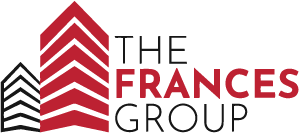Expected Tapering of Bond Purchases Could Be Decided in October, Powell Says
The Federal Reserve’s Open Market Committee voted Wednesday to maintain its current accommodative stance on monetary policy, keeping short-term interest rates low.
In a statement, the U.S. central bank said it plans to keep rates from 0% to 0.25% and expects “it will be appropriate to maintain this target range until labor market conditions have reached levels consistent with [its] assessments of maximum employment and inflation has risen to 2% and is on track to moderately exceed 2% for some time.”
Financial markets expected to hear the FOMC suggest that tapering of bond purchases would begin in the near term, while still noting the outlook on jobs needs improvement. And indeed, the committee said that a moderation in purchases “may soon be warranted.”
Fed Chairman Jerome Powell said that decision could be made next month.
“For inflation, we appear to have achieved more than significant progress,” Powell said Wednesday at a news conference. “My own view would be that the … substantial further progress test for employment is all but met.”
Now the FOMC will consider whether substantial progress has been made in meeting inflation and employment goals.
In December, the committee indicated it would continue to increase its holdings of Treasury securities by at least $80 billion per month and of mortgage-backed securities by at least $40 billion per month until progress has been made toward its maximum employment and price stability goals.
“These asset purchases help foster smooth market functioning and accommodative financial conditions, thereby supporting the flow of credit to households and businesses,” the committee said then.
A Fed summary of economic projections released Wednesday showed an economic slowing from June, likely the result of the COVID-19 delta variant’s spread. The change in real gross domestic product for 2021 is now forecast at 5.9%, down from 7%. The unemployment rate is at 4.8%, up from 4.5%.
At his news conference, Powell said recent spikes in prices are largely due to supply-chain bottlenecks brought about by the unprecedented speed of the economic rebound.
“These bottleneck effects have been larger and longer lasting than anticipated, leading to upward revisions to participants inflation projections for this year,” he said.
Inflation projections for the year moved up from 4.5% in June to 4.9% but taper in 2022 and 2023 to closer to the 2% level — the Fed’s target rate. Unemployment is expected to bottom at 3.5% in 2023 and 2024.
Author Credit: CoStar Group
